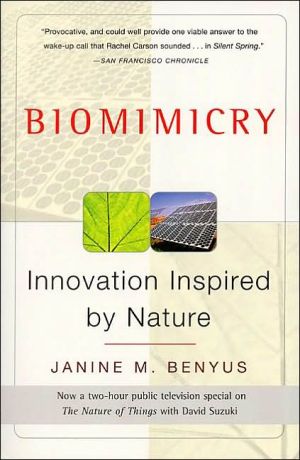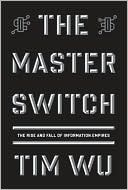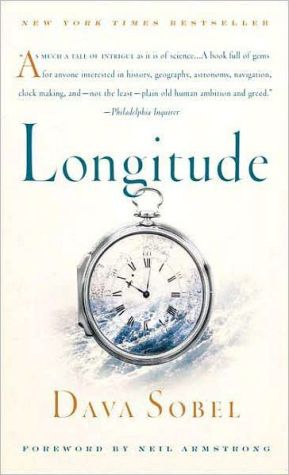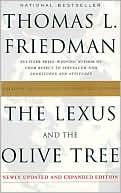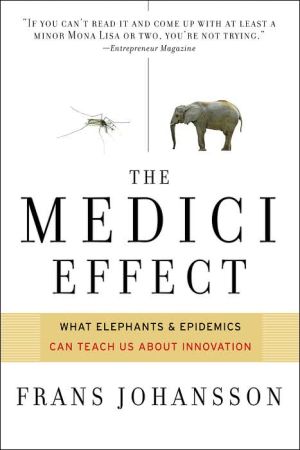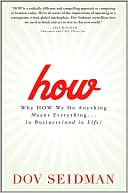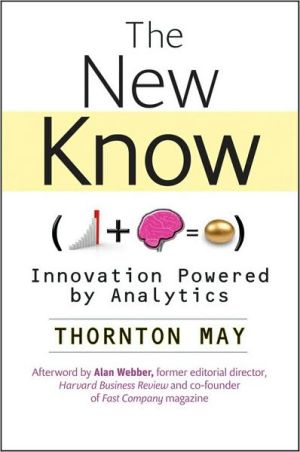Biomimicry: Innovation Inspired by Nature
This profound and accessible book details how science is studying nature’s best ideas to solve our toughest 21st-century problems.\ If chaos theory transformed our view of the universe, biomimicry is transforming our life on Earth. Biomimicry is innovation inspired by nature – taking advantage of evolution’s 3.8 billion years of R&D since the first bacteria. Biomimics study nature’s best ideas: photosynthesis, brain power, and shells – and adapt them for human use. They are...
Search in google:
This profound and accessible book details how science is studying nature’s best ideas to solve our toughest 21st-century problems.If chaos theory transformed our view of the universe, biomimicry is transforming our life on Earth. Biomimicry is innovation inspired by nature – taking advantage of evolution’s 3.8 billion years of R&D since the first bacteria. Biomimics study nature’s best ideas: photosynthesis, brain power, and shells – and adapt them for human use. They are revolutionising how we invent, compute, heal ourselves, harness energy, repair the environment, and feed the world. Science writer and lecturer Janine Benyus names and explains this phenomenon. She takes us into the lab and out in the field with cutting-edge researchers as they stir vats of proteins to unleash their computing power; analyse how electrons zipping around a leaf cell convert sunlight into fuel in trillionths of a second; discover miracle drugs by watching what chimps eat when they’re sick; study the hardy prairie as a model for low-maintenance agriculture; and more. Publishers Weekly The natural world, says Benyus (Beastly Behaviors), has an enormous amount to teach us, if only we would "tune in"as some scientists are beginning to dobefore it's too late. Touring the laboratories of a wide array of researchers, she reports on the emerging race to mimic natural processes (hence "biomimicry") in the business-driven quest for better products, environmentally sound technologies and miracle drugs. The scientists speak with palpable excitement, explaining the principles behind a utopian future of unlimited possibilities: energy harnessed by simple, non-toxic molecules modeled on the principles of photosynthesis, so efficient they put the best solar cells to shame; an organic computer, thousands of times faster and more powerful than the most advanced Pentium, that emulates the principles embodied in DNA; farms with abundant yields requiring virtually no pesticides, fertilizers or "energy inputs," mimicking a natural ecosystem-and more. Benyus's shotgun approach can be disorienting, but the possible breakthroughs, the technologies behind them and the scientists themselves are invariably fascinating. And Benyus's observations are engaging as well, bringing to her tech-oriented subject a non-didactic moral framework and an invigorating sense of wonder: "By deliberately looking for creatures that awe us, we may just stumble upon a whole new chemistrythe spoils of survival." (June)
Chapter One: Echoing Nature\ Why Biomimicry Now?\ We must draw our standards from the natural world. We must honor with the humility of the wise the bounds of that natural world and the mystery which lies beyond them, admitting that there is something in the order of being which evidently exceeds all our competence.\ — Václav Havel, president of the Czech Republic\ It's not ordinary for a bare-chested man wearing jaguar teeth and owl feathers to grace the pages of The New Yorker, but these are not ordinary times. While I was writing this book, Moi, an Huaorani Indian leader whose name means "dream," traveled to Washington, D.C., to defend his Amazonian homeland against oil drilling. He roared like a jaguar in the hearings, teaching a roomful of jaded staffers where real power comes from and what homeland actually means.\ Meanwhile, in America's heartland, two books about aboriginal peoples were becoming word-of-mouth best-sellers, much to their publishers' surprise. Both were about urban Westerners whose lives are changed forever by the wise teachings of preindustrial societies.\ What's going on here? My guess is that Homo industrialis, having reached the limits of nature's tolerance, is seeing his shadow on the wall, along with the shadows of rhinos, condors, manatees, lady's slippers, and other species he is taking down with him. Shaken by the sight, he, we, are hungry for instructions about how to live sanely and sustainably on the Earth.\ The good news is that wisdom is widespread, not only in indigenous peoples but also in the species that havelived on Earth far longer than humans. If the ageof the Earth were a calendar year and today were a breath before midnight on New Year's Eve, we showed up a scant fifteen minutes ago, and all of recorded history has blinked by in the last sixty seconds. Luckily for us, our planet-mates — the fantastic meshwork of plants, animals, and microbes — have been patiently perfecting their wares since March, an incredible 3.8 billion years since the first bacteria.\ In that time, life has learned to fly, circumnavigate the globe, live in the depths of the ocean and atop the highest peaks, craft miracle materials, light up the night, lasso the sun's energy, and build a self-reflective brain. Collectively, organisms have managed to turn rock and sea into a life-friendly home, with steady temperatures and smoothly percolating cycles. In short, living things have done everything we want to do, without guzzling fossil fuel, polluting the planet, or mortgaging their future. What better models could there be?\ Echo-Inventions\ In these pages, you'll meet men and women who are exploring nature's masterpieces — photosynthesis, self-assembly, natural selection, self-sustaining ecosystems, eyes and ears and skin and shells, talking neurons, natural medicines, and more — and then copying these designs and manufacturing processes to solve our own problems. I call their quest biomimicry — the conscious emulation of life's genius. Innovation inspired by nature.\ In a society accustomed to dominating or "improving" nature, this respectful imitation is a radically new approach, a revolution really. Unlike the Industrial Revolution, the Biomimicry Revolution introduces an era based not on what we can extract from nature, but on what we can learn from her.\ As you will see, "doing it nature's way" has the potential to change the way we grow food, make materials, harness energy, heal ourselves, store information, and conduct business.\ In a biomimetic world, we would manufacture the way animals and plants do, using sun and simple compounds to produce totally biodegradable fibers, ceramics, plastics, and chemicals. Our farms, modeled on prairies, would be self-fertilizing and pest-resistant. To find new drugs or crops, we would consult animals and insects that have used plants for millions of years to keep themselves healthy and nourished. Even computing would take its cue from nature, with software that "evolves" solutions, and hardware that uses the lock-and-key paradigm to compute by touch.\ In each case, nature would provide the models: solar cells copied from leaves, steely fibers woven spider-style, shatterproof ceramics drawn from mother-of-pearl, cancer cures compliments of chimpanzees, perennial grains inspired by tallgrass, computers that signal like cells, and a closed-loop economy that takes its lessons from redwoods, coral reefs, and oak-hickory forests.\ The biomimics are discovering what works in the natural world, and more important, what lasts. After 3.8 billion years of research and development, failures are fossils, and what surrounds us is the secret to survival. The more our world looks and functions like this natural world, the more likely we are to be accepted on this home that is ours, but not ours alone.\ This, of course, is not news to the Huaorani Indians. Virtually all native cultures that have survived without fouling their nests have acknowledged that nature knows best, and have had the humility to ask the bears and wolves and ravens and redwoods for guidance. They can only wonder why we don't do the same. A few years ago, I began to wonder too. After three hundred years of Western Science, was there anyone in our tradition able to see what the Huaorani see?\ How I Found the Biomimics\ My own degree is in an applied science — forestry — complete with courses in botany, soils, water, wildlife, pathology, and tree growth. Especially tree growth. As I remember, cooperative relationships, self-regulating feedback cycles, and dense interconnectedness were not something we needed to know for the exam. In reductionist fashion, we studied each piece of the forest separately, rarely considering that a spruce-fir forest might add up to something more than the sum of its parts, or that wisdom might reside in the whole. There were no labs in listening to the land or in emulating the ways in which natural communities grew and prospered. We practiced a human-centered approach to management, assuming that nature's way of managing had nothing of value to teach us.\ It wasn't until I started writing books on wildlife habitats and behavior that I began to see where the real lessons lie: in the exquisite ways that organisms are adapted to their places and to each other. This hand-in-glove harmony ...\ Biomimicry. Copyright © by Janine Benyus. Reprinted by permission of HarperCollins Publishers, Inc. All rights reserved. Available now wherever books are sold.
Ch. 1Echoing Nature: Why Biomimicry Now?1Ch. 2How Will We Feed Ourselves? Farming to Fit the Land: Growing Food Like a Prairie11Ch. 3How Will We Harness Energy? Light into Life: Gathering Energy Like a Leaf59Ch. 4How Will We Make Things? Fitting Form to Function: Weaving Fibers Like a Spider95Ch. 5How Will We Heal Ourselves? Experts in Our Midst: Finding Cures Like a Chimp146Ch. 6How Will We Store What We Learn? Dances with Molecules: Computing Like a Cell185Ch. 7How Will We Conduct Business? Closing the Loops in Commerce: Running a Business Like a Redwood Forest238Ch. 8Where Will We Go from Here? May Wonders Never Cease: Toward a Biomimetic Future285Bio-Inspired Readings299Index301
\ Publishers Weekly - Publisher's Weekly\ The natural world, says Benyus (Beastly Behaviors), has an enormous amount to teach us, if only we would "tune in"as some scientists are beginning to dobefore it's too late. Touring the laboratories of a wide array of researchers, she reports on the emerging race to mimic natural processes (hence "biomimicry") in the business-driven quest for better products, environmentally sound technologies and miracle drugs. The scientists speak with palpable excitement, explaining the principles behind a utopian future of unlimited possibilities: energy harnessed by simple, non-toxic molecules modeled on the principles of photosynthesis, so efficient they put the best solar cells to shame; an organic computer, thousands of times faster and more powerful than the most advanced Pentium, that emulates the principles embodied in DNA; farms with abundant yields requiring virtually no pesticides, fertilizers or "energy inputs," mimicking a natural ecosystem-and more. Benyus's shotgun approach can be disorienting, but the possible breakthroughs, the technologies behind them and the scientists themselves are invariably fascinating. And Benyus's observations are engaging as well, bringing to her tech-oriented subject a non-didactic moral framework and an invigorating sense of wonder: "By deliberately looking for creatures that awe us, we may just stumble upon a whole new chemistrythe spoils of survival." (June)\ \ \ \ \ Library JournalInnovations, whether in farming, composite science, or computing, are a product of human creativity. Science writer Benyus (Beastly Behaviors, LJ 9/1/92) uses these subjects and others to demonstrate how nature's solutions to situations have been the creative jumping-off points for individuals seeking solutions, developing, or simply revitalizing processes or products. The first seven chapters are a prelude to the final chapter, which tackles industrial ecology. Here, Benyus proposes "ten lessons" that an ecologically astute company, culture, or economy could practice to promote a healthier existence for us all. There is no grandstanding, just readable language and a simple awe at human creativity and the uses to which it can be put. For popular science collections.Michael D. Cramer, North Carolina Dept. of Environmental Health and Natural Resources Lib., Raleigh\ \ \ Kirkus Reviews"Doing it nature's way" is the theme of this wide-eyed-with-wonder exposition of what's going on in a variety of fields—from farming to computer science—as scientists try to emulate natural processes.\ The wonder is abundant as Benyus waxes rhapsodic about the potential for a greening of the globe that could feed the millions, clean the environment, and cure our ills. The name of the game is biomimicry, here defined as a "survival tactic whereby humans try to imitate life's designs and processes, e.g., running a business like a redwood forest." Indeed, that is the theme of one of the last chapters in which the model for conducting business is the mature "Type III" stage of ecological succession embodied by the redwood forest. Nature's operating principles here include using waste as a resource, diversifying and cooperating to fully use the habitat, using energy and materials efficiently and sparingly, not fouling the nest, etc. Translating this into business terms, Benyus describes a number of experiments in process, such as an industrial park in Denmark where waste steam from the power plant is used to power two adjacent companies, heat 3,500 homes, and deliver warm water to fish farms. Elsewhere Benyus's survey ranges over attempts to revolutionize farming away from monocrop and toward prairie-like multicultures; zoopharmacognosy, or observing what sick animals do to cure themselves; synthesizing spider thread or the glue marine mussels use to attach to surfaces under water; and fathoming the mysteries of photosynthesis. In each case this Montana-based nature writer has interviewed the principal players and provided rich details—particularly in areas like mussel glue or photosynthesis, where emulating nature is no easy trick. To some extent they provide correctives to the Gaia-like homage to nature that pervades.\ Much of interest here, but spare us the cheerleading.\ \ \
